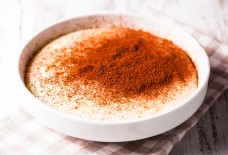Eid Al-Adha: A Feast of Sacrifice
BY: Sara Alsayed / Arab America Contributing Writer
Most of the western society knows or has at least heard of Eid, but what they do not know is that, as Muslims, we have two Eids. The first is Eid Al-Fitr, which is the most commonly known, and Eid Al-Adha, which is less known among westerners (Americans).
Eid al-Adha, also called Eid Al-Kurban or the “Feast of Sacrifice,” is a holiday that honors the sacrifice of Ibrahim, known as Abraham in Christianity and Judaism, commanded by Allah to sacrifice his son Ismail.
Muslim communities around the world celebrate Eid al-Adha as the culmination of their hajj (pilgrimage) rite at Mina, Saudi Arabia, near Mecca. Although Eid Al-Adha has no direct relation to the Hajj; it does come right after the completion of the Hajj, so it is significant in time.
The Story Behind Eid Al-Adha
In honor of Eid-ul-Adha, we commemorate Prophet Ibrahim’s devotion to Allah SWT and his willingness to sacrifice his son, Ismail. After Ismail was about to be sacrificed, Allah SWT replaced Ismail for a ram. Therefore, the festival of Eid-ul-Adha means the celebration of sacrifice because Allah SWT gave this command to test Prophet Ibrahim’s willingness and commitment to obey His command, without question.
Depending on the country, the holiday can last from two to four days. It is celebrated by sacrificing a Qurbani. A Qurbani is a sacrifice that consists of slaughtering an animal as a sacrifice to mark this occasion in remembrance of Prophet Ibrahim’s sacrifice for Allah SWT. This is also known as Udhiya. The days of animal sacrifice in total are three days, from the 10th to the 12th of Dhu-al-Hijjah.
The sacrifice can be sheep, lamb, goat, cow, bull, or a camel; the sheep, lamb, or goat consist of one Qurbani share, whereas a bull, cow, or camel consists of seven shares per animal. However, for the sacrifice to be accepted, it must be slaughtered in the right and “halal” way, meaning that it must be healthy and over a certain age.
The difference between Eid Al-Fitr and Eid Al -Adha is quite significant. Eid Al-Fitr is the holiday that comes right after the last day of the month of Ramadan. It is celebrated after every Muslim has finished their fasting, which is one of the five pillars in Islam.
As for Eid Al-Adha, as mentioned above, comes in the final days of Hajj and takes place two months after Eid Al-Fitr. Yet one thing in common between the two holidays or celebrations is that they are both the same every year according to the Islamic lunar calendar.
Before Eid Al-Adha comes, every Muslim fasts the first 9 days of Dhul Hijjah, especially on Arafat day (the day before Eid) because it expiates the sins of the preceding year and the coming year, meaning that people would fast on this day to get their bad deeds in the upcoming year, and the past year, taken away. As for the Muslims that are doing Hajj, they are exempt from fasting because they have already been and still are doing Hajj.
Traditionally, this holiday is spent with family, relatives, friends, etc. All dressed in the best or new attire that they have or own.
Check out Arab America’s blog here!









